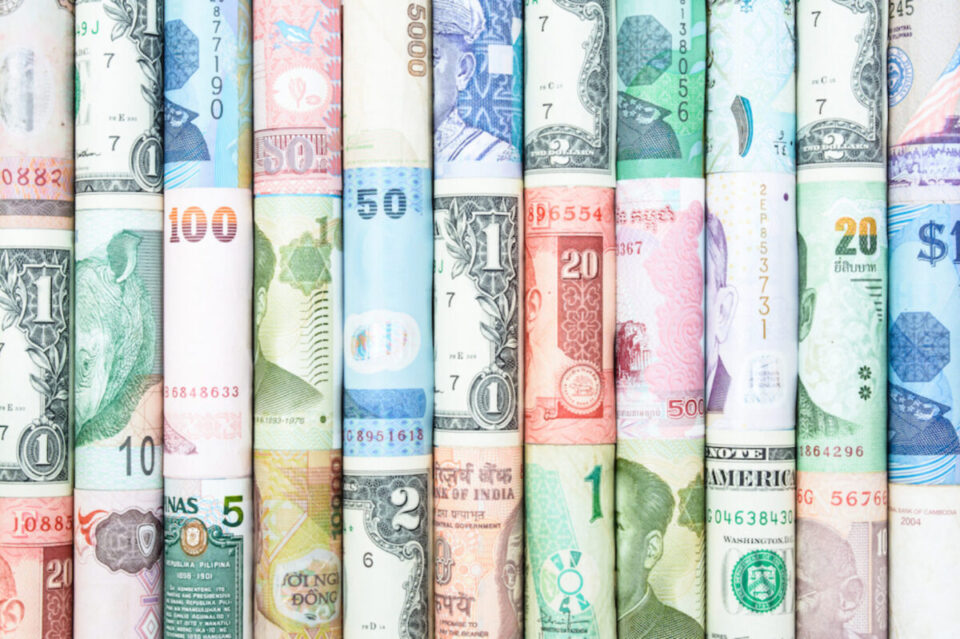Like a language, preference between payment methods swings freely between the different cultures of the world. The way in which citizens handle and spend their money has rarely enjoyed a universal plateau, with the effects of the Covid-19 pandemic inciting increasing polarisation between regional payment methods.

To consider the differences present in the global payment landscape, we spoke with James Booth, who holds the position of Vice President Head of Partnerships for EMEA at London-based PPRO; an established provider of local payments infrastructure, seeking to power global growth for payment companies.
Among their clientele are some of the payment industry’s biggest players, including the likes of Paypal, Alipay, Stripe, Citi Bank, and Adobe.
With a demonstrated ability in the business development, payment infrastructure, and financial technology sectors, here James discusses the noticeable differences present in APAC, the UK, and the US payment methods, and how the global pandemic is fuelling the future of financial innovation.
Worldly Payment Procedures
It is safe to say local and alternative payment methods – regional e-wallets, bank transfer payments, Buy Now Pay Later schemes, and more – have seen huge growth over the last year. In 2020, consumers across the globe have been more inclined than ever to try different payment methods in a search for greater convenience and heightened security during national lockdowns. According to Paysafe’s LiT research, 56% of global consumers mentioned that they used a new local payment method in the first month of the pandemic.
However, like all aspects of culture, payment preferences vary from country to country. In fact, they are more diverse than ever. According to PPRO’s research, over 70% of global e-commerce is powered by over 500 local payment methods. For example, e-wallets like Alipay, WeChat Pay, and GrabPay dominate payments in Asia. In Southeast Asia, GrabPay, which started out as a food delivery and on-demand taxi app, has evolved into a leading payment method used by 115 million consumers across the region.
In the US, credit cards and debit cards remain the most popular online payment methods with more than 50% of market share in each region. Whilst the UK is also typically known as a card-centric market, there is also a growing number of consumers turning to alternative payment methods.
In particular, bank transfer payments (often the preferred way to pay in some European markets) have doubled in popularity in the UK over the last three years. To anyone who knows the UK payments market, this isn’t surprising. Bank transfer payment methods offer transparency; allowing the consumer to see their balance in real-time, before they press the “buy” button.
When it comes to shopping online, instalment payment methods like Klarna and Afterpay have also surged in use over the last year. During the pandemic, Buy Now Pay Later payment methods have helped to encourage consumer spending by enabling shoppers suffering from financial strain to defer payments and still buy what they wanted. Before the pandemic, apps like these were primarily used by younger demographics to break up payments on big-ticket items, luxury goods, and travel. Yet many consumers now prefer a Buy Now Pay Later option for all goods.
The Future of Payments
It has been a year of momentous change for the payments industry. The pandemic – while undoubtedly awful – has been rocket fuel for digital transformation, providing an opportunity for the payments industry to innovate. Due to a necessary shift in behaviour, we are already seeing an acceleration towards contactless, digital payment methods like mobile e-wallets, bank transfers, and QR codes.
With the e-commerce market set to reach a predicted market volume of £92 million by 2025, and the opportunity for cross-border expansion at an all-time high, the demand for more localised and innovative payment methods will only continue to grow. More and more customers are now online, looking for products or services that suit their very specific needs. A shopper might look across borders for what they want: better-quality products, payment methods accepted, stronger brand loyalty, and more. But they will quickly abandon the transaction page if their preferred payment method is not available.
Ultimately, payment choice will play a major role in driving sales in the future, meaning merchants will need a diverse payment portfolio to ensure transactions are completed and customer loyalty retained.
This will continue to spark increased innovation for payments, but also the proliferation of niche local payment options across the globe.
However, as digital payments head towards a global tipping point, the need for greater regulation and security will also continue to grow. For Europe, the second Payment Service Directive, also known as PSD2, has been a topic of discussion for some time now. And, despite being delayed for a second time to allow adequate preparation time following Covid, the new September 2021 deadline will come around soon enough.
Heightened security will be a key consideration for the future of payments and will require payment providers and merchants to collaborate to ensure they’re prepared to adapt digital shops to these new requirements, whilst also ensuring the payments process is completely seamless for the customer.



